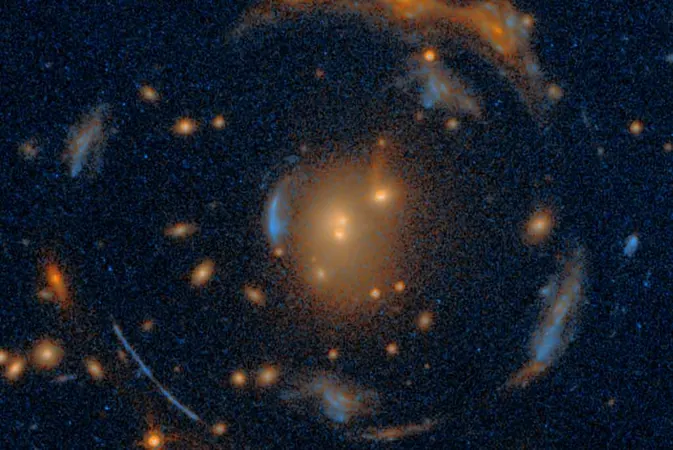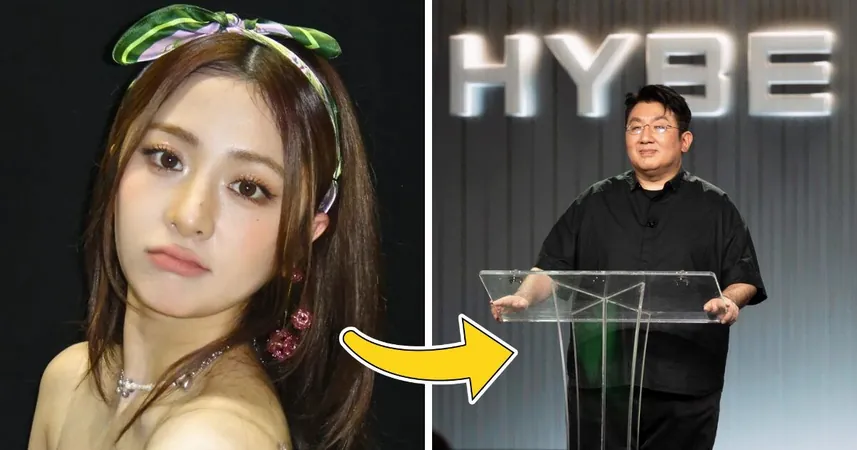
This Might be the Most Incredible Gravitational Lens Ever Discovered!
2024-09-23
A gravitational lens acts like a cosmic funhouse mirror. It bends and distorts the light from galaxies hidden behind it, revealing astonishing details about distant celestial objects. Recently, astronomers utilizing the Hubble Space Telescope (HST) unveiled a spectacular image of what’s dubbed “The Carousel Lens.” This remarkable phenomenon showcases a unique alignment of seven galaxies distorted by an intervening galaxy cluster.
Senior scientist David Schlegel from Berkeley Lab described this astronomical event as remarkable: “This is an incredibly fortunate 'galactic line-up'—a rare alignment of multiple galaxies across a line of sight that spans most of the observable universe. Locating one such alignment is like finding a needle in a haystack; discovering all of these together resembles having eight needles perfectly lined up within that haystack.”
The Carousel Lens was initially detected in data collected from the Dark Energy Survey a few years back. Researchers have now turned their focus toward examining it more closely to measure its mass and the effects it has on the images of more distant galaxies. This extraordinary alignment could yield groundbreaking insights into the Universe's infancy, illuminating high-redshift galaxy sources, the properties of the lensing cluster, and various unsolved mysteries in cosmology.
Dissecting the Carousel Gravitational Lens
Typically, large-scale gravitational lenses consist of a “lensing object” with more distant galaxies positioned behind it. However, the Carousel Lens operates on a more expansive scale, encompassing cosmic objects that are millions of light-years apart. The lensing cluster, known as DESI-090.9854-35.9683, is situated approximately 5 billion light-years from Earth and contains at least four major galaxy members, among several potential companions.
Spanning distances from 7.62 to 12 billion light-years from Earth, the seven distant galaxies, influenced by the lensing cluster, display multiple distorted images of each galaxy. The bending effect—the “funhouse mirror” phenomenon—creates elongated and stretched shapes. Notably, one group of galaxies labeled “4a, 4b, 4c, 4d” forms an almost perfect “Einstein Cross,” highlighting the symmetrical mass distribution within the lens.
According to Xiaoshang Huang, a member of the Berkeley research team, the Carousel Lens exemplifies a “strong lens” in the cosmos. Huang stated, “Our team has diligently searched for strong lenses and is modeling the most valuable systems. The Carousel Lens is a stunning alignment of seven galaxies grouped nearly perfectly behind the foreground cluster. As they appear, the multiple images of the background galaxies create concentric circular patterns akin to a carousel—a momentous discovery! The computational models generated are promising for measuring cosmic properties, including dark matter and dark energy.”
Why is This Lens So Extraordinary?
In an insightful paper recently published, Schlegel, Huang, and their colleagues provided a detailed analysis of the Carousel Lens's structure. They revealed that it exhibits nearly every possible lensing configuration seen in such cosmic phenomena, encompassing various arcs, diamond shapes, the Einstein Ring, and double lensing instances.
The diverse distances between the lensing cluster and the galaxies it distorts offer exciting avenues for cosmological exploration. The research team aims to conduct further spectral studies to understand the matter distribution within the lensing cluster. The presence of at least seven lensed sources will help quantify the amount of matter in the cluster, providing deeper insights into dark and baryonic matter within these structures.
Moreover, this lensing system allows scientists to study the characteristics of the distant sources themselves. This is crucial, as these far-off galaxies can shed light on conditions across different epochs of cosmic history. For instance, one of the sources, labeled as source 7, presents itself as a potentially very high-redshift “quiescent” galaxy. It appears exceedingly “red” in infrared measurements, a trait seen in other galaxies observed by HST. This source may exemplify “early galaxy quenching,” a phenomenon where star formation ceases, leading to a quiescent state. Such a process often involves complex interactions between central supermassive black holes and surrounding regions, potentially triggered by galaxy mergers—a common occurrence in the early Universe.
Through the study of the Carousel Lens and similar gravitational lenses, astronomers unlock the secrets of our Universe's nascent epochs and the cosmic events that have shaped the galaxies we recognize today.
Stay tuned for more astronomical wonders, as the mysteries of deep space continue to unfold before our very eyes!


 Brasil (PT)
Brasil (PT)
 Canada (EN)
Canada (EN)
 Chile (ES)
Chile (ES)
 España (ES)
España (ES)
 France (FR)
France (FR)
 Hong Kong (EN)
Hong Kong (EN)
 Italia (IT)
Italia (IT)
 日本 (JA)
日本 (JA)
 Magyarország (HU)
Magyarország (HU)
 Norge (NO)
Norge (NO)
 Polska (PL)
Polska (PL)
 Schweiz (DE)
Schweiz (DE)
 Singapore (EN)
Singapore (EN)
 Sverige (SV)
Sverige (SV)
 Suomi (FI)
Suomi (FI)
 Türkiye (TR)
Türkiye (TR)